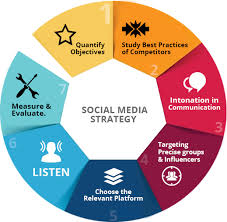Crafting a Strong Identity: The Art of Building a Brand
Building a Brand: The Key to Business Success
In today’s competitive business landscape, building a strong brand is essential for long-term success. A brand is not just a logo or a slogan; it is the essence of your business – what you stand for, how you are perceived by your customers, and what sets you apart from your competitors.
So, how do you go about building a brand that resonates with your target audience and drives business growth? Here are some key steps to consider:
Define Your Brand Identity
Start by defining your brand identity – what values, mission, and vision do you want your brand to embody? Clearly articulate what makes your brand unique and why customers should choose you over others.
Know Your Target Audience
Understanding your target audience is crucial in building a successful brand. Conduct market research to identify who your ideal customers are, their needs, preferences, and pain points. Tailor your brand messaging and communication strategies to resonate with this audience.
Create Consistent Branding Elements
Consistency is key in branding. Develop cohesive branding elements such as logo, colour palette, typography, tone of voice, and imagery that reflect your brand identity. Use these elements consistently across all touchpoints to create a strong and recognisable brand presence.
Differentiate Your Brand
To stand out in a crowded marketplace, focus on what makes your brand unique. Highlight your USP (Unique Selling Proposition) and communicate it effectively to differentiate yourself from competitors. Show how your brand adds value and solves customer problems better than others.
Build Trust and Credibility
Trust is the foundation of any successful brand. Build trust with your audience by delivering on promises, providing excellent customer service, being transparent and authentic in your communication, and showcasing social proof such as customer testimonials or case studies.
Engage with Your Audience
Create meaningful connections with your audience through engaging content, storytelling, social media interaction, community building, and personalised experiences. Listen to feedback, respond to queries promptly, and show that you value customer relationships.
Evolve Your Brand Over Time
A successful brand is not static; it evolves with changing market trends, consumer preferences, and business goals. Regularly review and refine your branding strategy to stay relevant and competitive in the ever-changing business landscape.
In conclusion, building a strong brand is an ongoing process that requires dedication, consistency, creativity, and customer-centricity. By investing time and effort into developing a compelling brand identity that resonates with your target audience, you can create a powerful asset that drives business success and loyalty for years to come.
Seven Key Advantages of Building a Strong Brand
- Enhances brand recognition and visibility
- Builds customer loyalty and trust
- Differentiates your business from competitors
- Increases perceived value of products or services
- Creates emotional connections with customers
- Provides a consistent framework for marketing efforts
- Facilitates expansion into new markets and product lines
Challenges of Building a Brand: Time, Cost, Consistency, and Differentiation
- Building a brand requires significant time and effort to establish brand recognition and credibility.
- Developing a strong brand identity can be costly, especially when investing in branding elements such as logo design, website development, and marketing materials.
- Maintaining consistency across all brand touchpoints can be challenging, especially when managing multiple communication channels and platforms.
- In a competitive market, standing out and differentiating your brand from competitors can be difficult and may require innovative strategies.
Enhances brand recognition and visibility
One significant advantage of building a brand is that it enhances brand recognition and visibility. By establishing a strong and consistent brand identity, businesses can increase their visibility in the marketplace and make it easier for consumers to recognise and remember them. This heightened brand recognition not only helps attract new customers but also fosters trust and loyalty among existing ones, ultimately leading to long-term success and growth for the business.
Builds customer loyalty and trust
Building a strong brand not only differentiates a business from its competitors but also plays a crucial role in fostering customer loyalty and trust. By consistently delivering on promises, providing exceptional customer experiences, and maintaining authenticity in communication, a well-established brand can create a deep emotional connection with customers. This connection builds trust over time, leading to repeat purchases, positive word-of-mouth referrals, and ultimately, long-term customer loyalty. Trust and loyalty are invaluable assets that can significantly impact a business’s bottom line and reputation in the market.
Differentiates your business from competitors
One of the key benefits of building a strong brand is that it effectively differentiates your business from competitors. By clearly defining your brand identity, highlighting your unique selling proposition, and communicating your value proposition to your target audience, you can establish a distinct and memorable presence in the market. This differentiation not only helps you stand out in a crowded marketplace but also allows customers to easily recognise and choose your brand over others, ultimately leading to increased brand loyalty and competitive advantage.
Increases perceived value of products or services
Building a strong brand significantly enhances the perceived value of products or services in the eyes of consumers. By establishing a positive brand image and reputation, businesses can command higher prices, instil trust and loyalty among customers, and differentiate themselves from competitors. A well-built brand communicates quality, reliability, and credibility, leading customers to associate higher value with the offerings. This increased perceived value not only attracts more customers but also allows businesses to achieve better margins and long-term success in the market.
Creates emotional connections with customers
Building a strong brand creates emotional connections with customers by tapping into their values, aspirations, and desires. When customers feel a genuine connection to a brand, they are more likely to develop loyalty and trust. By evoking positive emotions and resonating with their target audience on a deeper level, brands can establish long-lasting relationships that go beyond mere transactions. Emotional connections foster customer engagement, advocacy, and repeat business, ultimately contributing to the brand’s success and growth in the market.
Provides a consistent framework for marketing efforts
Building a strong brand provides a consistent framework for marketing efforts, ensuring that all communication strategies and campaigns align with the brand’s identity, values, and messaging. This consistency helps in creating a cohesive and recognisable brand presence across various channels, reinforcing brand recall and building trust with customers. By maintaining a unified approach in marketing activities, businesses can effectively convey their unique selling points and establish a strong connection with their target audience, ultimately leading to increased brand awareness and loyalty.
Facilitates expansion into new markets and product lines
Building a strong brand facilitates expansion into new markets and product lines by leveraging the existing brand equity and recognition. A well-established brand with a positive reputation can help businesses gain trust and credibility in unfamiliar markets, making it easier to introduce new products or services. Customers who are already loyal to the brand are more likely to try out new offerings, leading to increased sales and market penetration. Additionally, a consistent brand identity across different markets helps maintain brand coherence and ensures a seamless transition for customers exploring new product lines.
Building a brand requires significant time and effort to establish brand recognition and credibility.
Building a brand requires a substantial investment of time and effort to establish brand recognition and credibility. Building a strong brand identity that resonates with customers, differentiates the business from competitors, and builds trust takes consistent messaging, strategic planning, and ongoing engagement. It involves creating a cohesive brand presence across various platforms and channels, which requires careful attention to detail and a long-term commitment to nurturing the brand’s reputation. While the process may be time-consuming, the payoff of a well-established brand that resonates with consumers and drives business success is invaluable.
Developing a strong brand identity can be costly, especially when investing in branding elements such as logo design, website development, and marketing materials.
Developing a strong brand identity can be a significant financial burden for businesses, particularly when considering the costs associated with essential branding elements like logo design, website development, and marketing materials. These expenses can quickly add up, especially for small businesses or startups operating on limited budgets. Investing in branding can strain financial resources and require careful budgeting to ensure that the brand-building efforts align with the overall business goals and deliver a return on investment in the long run.
Maintaining consistency across all brand touchpoints can be challenging, especially when managing multiple communication channels and platforms.
Maintaining consistency across all brand touchpoints can be a significant challenge, particularly when juggling multiple communication channels and platforms. Ensuring that the brand message, tone, and visual identity remain uniform across various mediums such as social media, websites, print materials, and in-person interactions requires meticulous attention to detail and effective coordination. Any discrepancies in branding elements can dilute the brand’s impact and confuse customers, highlighting the importance of implementing robust brand guidelines and strategies to uphold consistency amidst diverse communication avenues.
In a competitive market, standing out and differentiating your brand from competitors can be difficult and may require innovative strategies.
In a competitive market, one significant challenge when building a brand is the difficulty in standing out and differentiating your brand from competitors. With numerous businesses vying for consumers’ attention, it can be a daunting task to devise innovative strategies that effectively set your brand apart. The need for creativity and unique approaches becomes paramount in order to capture the interest of target audiences and establish a distinctive brand identity that resonates in a crowded marketplace.




